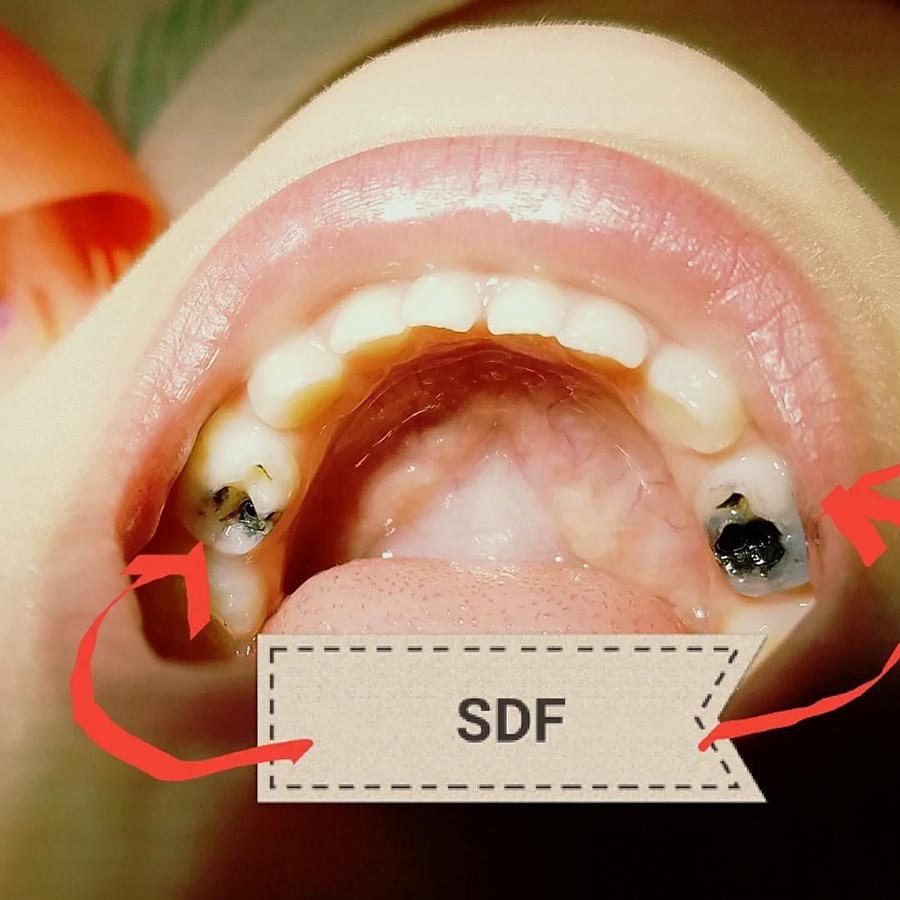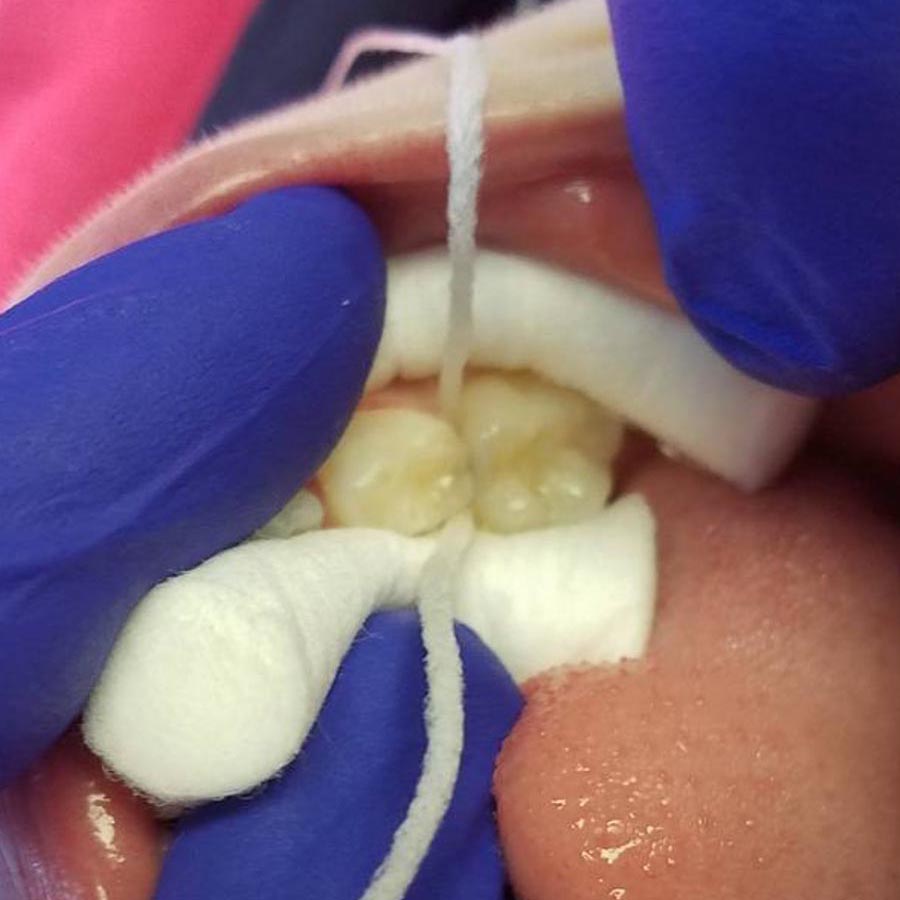Minimally Invasive Dentistry in Coppell, TX
Silver Diamine Fluoride is a fairly new and revolutionary treatment option for the management of cavities in the US. Silver Diamine Fluoride is an antimicrobial liquid that is able to treat cavities in a non-invasive, painless, fast and affordable way.
Not every patient with tooth decay may be a candidate for this alternative treatment, Dr. Karen evaluates this option and will present it to you if needed.
SOURCES OF INFORMATION
- Silver Diamine fluoride in caries prevention and arrest: a systematic literature review
Dr. Violeta Contreras, DDS, Dr. Milagros J. Toro, DDS, MSD, PhD, Dr. Augusto R. Elías-Boneta, DMD, MSD, DHC, and Ms. Angeliz Encarnación-Burgos. Author manuscript; available in PMC 2017 Jul 31.
Gen Dent. 2017 May-Jun; 65(3): 22–29.
- Evidence-Based Dentistry Update on Silver Diamine Fluoride.
Crystal YO1, Niederman R2. Dent Clin North Am. 2019 Jan;63(1):45-68. doi: 10.1016/j.cden.2018.08.011.
Use of Silver Diamine Fluoride for Dental Caries Management in Children and Adolescents,
Including Those with Special Health Care Needs
Yasmi O. Crystal, DMD, MSc, FAAPD1 • Abdullah A. Marghalani, BDS, MSD, DrPH2 • Steven D. Ureles, DMD, MS3 • John Timothy Wright, DMD, MS4 • Rosalyn Sulyanto, DMD, MS5 • Kimon Divaris, DDS, PhD6 • Margherita Fontana, DDS, PhD7 • Laurel Graham, MLS8
E-ffectiveness of Silver Diamine Fluoride and Sodium Fluoride Varnish in Arresting Dentin Caries in Chinese Pre-school Children C.H. Chu1, E.C.M. Lo1*, and H.C. Lin2 Faculty of Dentistry, The University of Hong Kong, 34 Hospital Road, Hong Kong, China; and 2Department of Preventive Dentistry, Sun Yat-sen University of Medical Sciences, Guangzhou, China; *corresponding author, edward-lo@hku.hk J Dent Res 81(11):767-770, 2002
- Dye BA, Thornton-Evans G, Li X, Iafolla TJ. Dental caries and sealant prevalence in children and adolescents in the United States, 2011–2012. NCHS data brief, no 191. Hyattsville, Md.: National Center for Health Stat- istics. 2015. Available at: “https://www.cdc.gov/nchs/ products/databriefs/db191.htm”. Accessed September 6, 2017. (Archived in WebCite® at: “http://www.webcita tion.org/6tX0D6qO1”)
Gao SS, Zhang S, Mei ML, Lo EC, Chu CH. Caries remineralisation and arresting effect in children by professionally applied fluoride treatment – A systematic review. BMC Oral Health 2016;16:12.
Duangthip D, Jiang M, Chu CH, Lo EC. Restorative approaches to treat dentin caries in preschool children: Systematic review. Eur J Paediatr Dent 2016;17(2): 113-21.
Crystal YO, Niederman R. Silver diamine fluoride treat- ment considerations in children’s caries management: Brief communication and commentary. Pediatr Dent 2016;38(7):466-71.
Fung M, Duangthip D, Wong M, Lo E, Chu C. Arresting dentine caries with different concentration and perio- dicity of silver diamine fluoride. JDR Clin Transl Res 2016;1(2):143-52.
Llodra JC, Rodriguez A, Ferrer B, Menardia V, Ramos T, Morato M. Efficacy of silver diamine fluoride for caries reduction in primary teeth and first permanent molars of schoolchildren: 36-month clinical trial. J Dent Res 2005;84(8):721-4.
Zhi QH, Lo ECM, Lin HC. Randomized clinical trial on effectiveness of silver diamine fluoride and glass ionomer in arresting dentine caries in preschool children. J Dent 2012;40(11):962-7.










